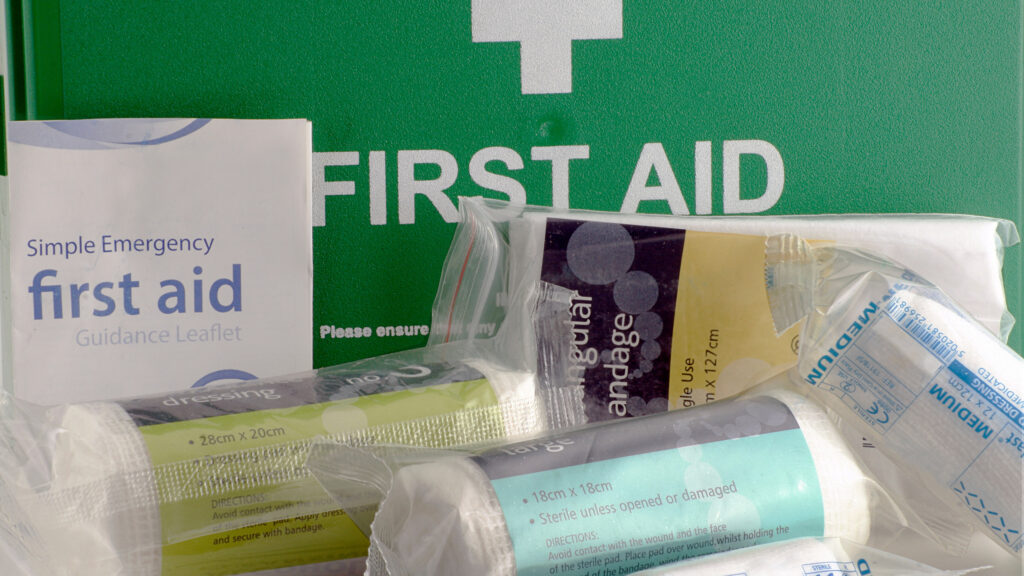Farm Doctor: When does a cut or scrape need medical attention?
 © AdobeStock
© AdobeStock Farming is a demanding occupation that involves many complex and potentially dangerous tasks on a daily basis.
Related injuries can vary from simple cuts and scrapes, to more serious lacerations or crush injuries.
While it is common to sustain cuts and scrapes, the majority of which can be managed at home, Farm Doctor Camilla Baker explains that it is important to know how to manage a serious injury and to recognise what an infected cut or scrape may look like.
See also: Farm Doctor: Could you recognise heart attack symptoms?

Dr Camilla Baker © Camilla Baker
Managing a cut
“Most cuts or scrapes can be managed at home with basic first aid,” Camilla explains. “It is important to clean the wound under fresh, clean, running water and apply pressure to stop the bleeding.
“After cleaning the wound, apply a clean dressing or plaster. In a generally fit and healthy person, cuts will heal, and it is important to change the dressing or plaster as needed and to keep an eye on the wound.”
As the wound or cut heals, the body activates the natural immune system to repair the damage. Mild redness and swelling are typically signs of normal healing, and it might scab over and a scar may develop.
Infection – signs and symptoms
If a wound is infected, however, the following signs and symptoms may be present:
- Worsening pain around the affected area
- Surrounding skin that becomes red, hot, or tender to touch
- Pus (thick white-yellow fluid) coming from the wound
- General signs of infection in the body such as fever, general aches and pains, or generally feeling unwell.
Camilla advises that if you are worried about a cut or scrape, it is always good to take pictures.
“This will help you to track the wound, and you can show it to a health professional,” she explains.
“As a doctor, I love to see pictures as it helps me to see how the wound has progressed. It also gives me an idea as to how worried you might be.”
Certain people are also at higher risk of developing infections from cuts and scrapes.
“If you have a weakened immune system – for example if you are on chemotherapy, steroids, or medicines that make you more likely to pick up infections – or have diabetes (type 1 or type 2), then you may be at a higher risk,” Camilla says.
Farming families are often made up of multiple generations and it is important that older people have their cuts and grazes closely monitored, as they may be more prone to infections.
What to do if a wound is infected?
If you are worried about a wound, it is important to get it reviewed by a health professional.
Infected cuts may be treated with antibiotics. These might be tablets or, if you are very unwell or your medical team is worried about sepsis, you may be given antibiotics through the vein (IV).
Sepsis is a general term used to describe a serious reaction to infection. Symptoms that might indicate sepsis include:
- Very high temperatures or chills
- Confusion or altered consciousness
If you were bitten by an animal or if the wound is deep and dirty, you may also need a tetanus shot, so it is important to seek advice from your doctor or NHS 111.
“Tetanus is a serious infection, caused by bacteria found in soil or manure,” says Camilla.
“Most people are vaccinated against tetanus. However, if you didn’t complete the vaccination course, or your last vaccine was more than 10 years ago, you will need a booster shot.
“Your doctor or clinician will be able to help advise you on this.”
When to seek urgent medical attention
If you are finding it difficult to initially stop the bleeding, Camilla advises following these steps:
- Check the wound and make sure there is nothing stuck in it
- If there is something in the wound, such as a large piece of glass or metal, do not try to take it out and avoid pushing the object further into the wound.
- Try to bring the edges of the wound together and press firmly on it with a bandage or clean cloth (such as a tea towel).
You need to contact 999 if the following symptoms occur:
- The blood is bright red, comes out in spurts or is very hard to control
- You lose feeling near the wound or have trouble moving the arm or leg
- You have a deep cut to your face or the palm of your hand
- There is an object such as metal or glass stuck in the wound
